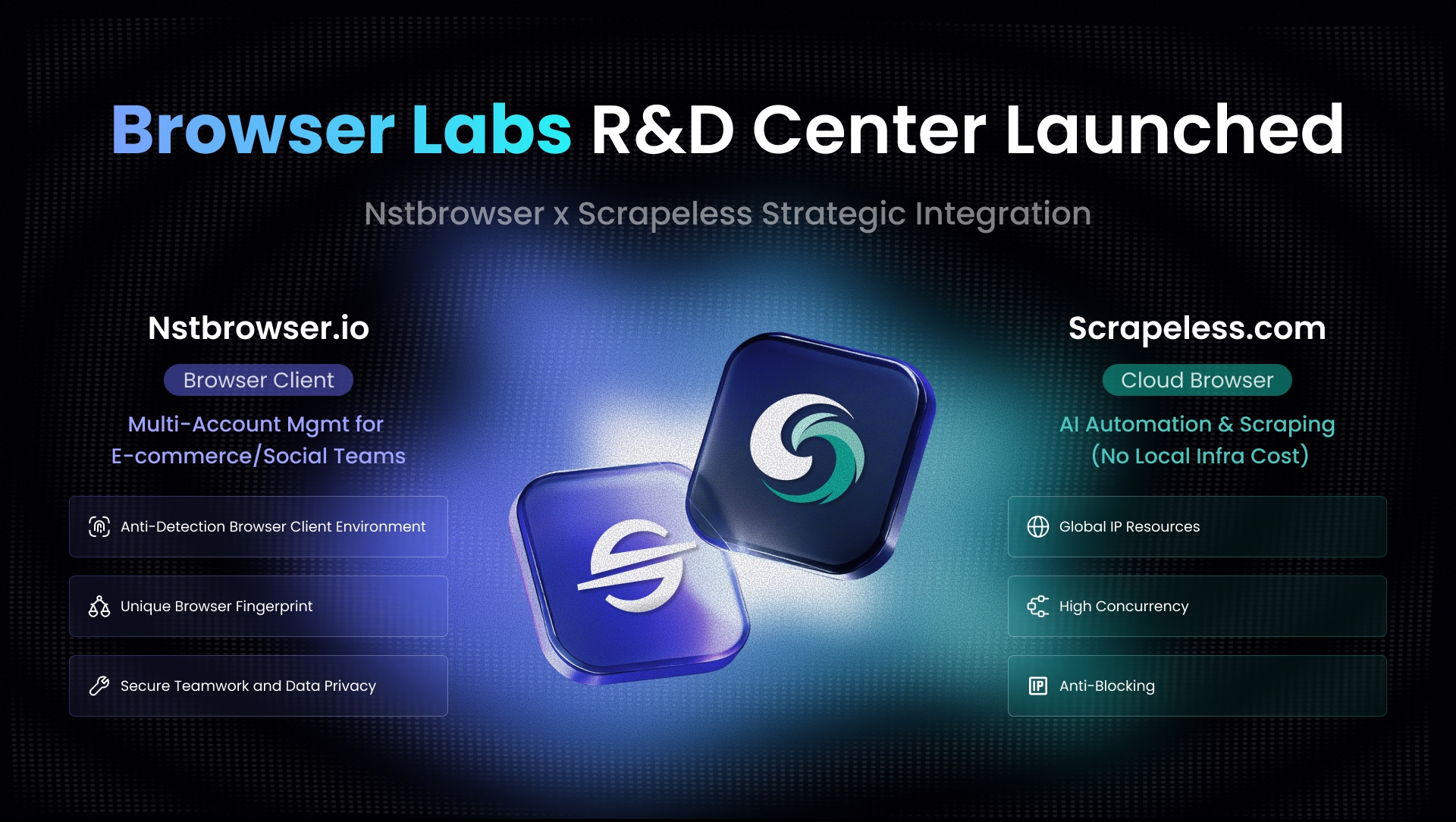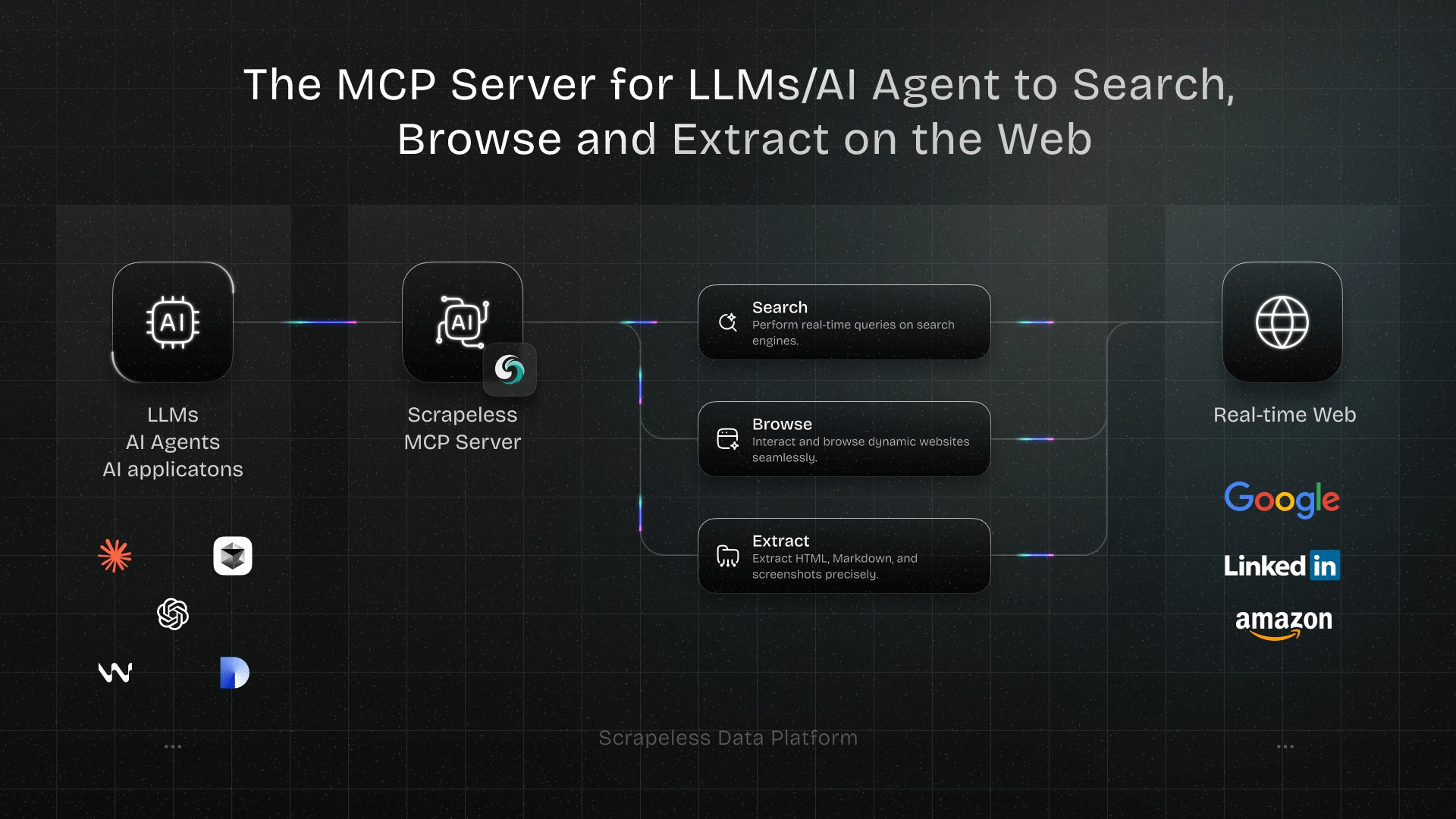Make Scraping Human: Ghost Cursor & Puppeteer Guide (2025)
Specialist in Anti-Bot Strategies
Web Scraping with Ghost Cursor — at a glance
Ghost Cursor adds natural mouse motion to Puppeteer.
This guide explains what Ghost Cursor is.
You’ll learn how to use it with Puppeteer.
It also covers proxy integration, limits, and safer alternatives.
At the end, we recommend Scrapeless for production-grade, compliant scraping.
What you’ll be able to answer after this guide
- What is Ghost Cursor?
- Which tools is it compatible with?
- How to use Ghost Cursor in Puppeteer?
- How it works alongside proxies and hosted browsers?
- When Ghost Cursor is (and isn’t) the right option?
What is Ghost Cursor and why it matters?
Ghost Cursor is a Puppeteer utility.
It makes cursor movement appear human.
Puppeteer’s native clicks jump instantly.
That immediate jump looks robotic.
Human-like motion reduces obvious automation signals.
That said, Ghost Cursor is one defensive measure.
It lowers simple heuristics, not advanced detection.
How Ghost Cursor moves the mouse
Puppeteer moves instantly between points.
Ghost Cursor generates many points on a smooth curve.
The cursor follows that curve to the target.
The resulting path mimics human hand motion.
This reduces mechanical-looking jumps and straight lines.
Quick start — project setup
Assumes basic JavaScript knowledge.
Create a project folder, initialize npm, and install deps:
bash
mkdir your-ghost-cursor-project
cd your-ghost-cursor-project
npm init -y
npm install ghost-cursor puppeteerBasic Ghost Cursor example (headful for demo)
This example launches a visible browser so you can watch the cursor:
javascript
const puppeteer = require('puppeteer');
const { createCursor, installMouseHelper } = require('ghost-cursor');
async function run() {
const browser = await puppeteer.launch({ headless: false });
const page = await browser.newPage();
// Optional: visualize cursor for debugging
await installMouseHelper(page);
const cursor = createCursor(page);
await page.goto('https://books.toscrape.com');
const book = await cursor.getElement("article.product_pod a");
const location = cursor.getLocation(book);
await cursor.moveTo(location);
await cursor.click(book);
await page.screenshot({ path: 'book.png' });
await browser.close();
}
run().catch(console.error);Ghost Cursor API — useful methods
- installMouseHelper(page) — show a visible mouse on the page. Useful for development.
- getElement(selector) — wrapper to find elements (works like
page.$). - getLocation(element) — returns
{x, y}coordinates for elements. - move(target) — move cursor to a selector or element.
- moveTo({x,y}) — move cursor to explicit coordinates.
- click(target) — perform a click via the cursor.
- scrollIntoView(target) — scroll until the element is visible.
- scrollTo(position) — scroll by keywords like
'top'or'bottom'. - scroll({x,y}) — scroll to coordinates.
These combine into concise, human-like interactions.
Proxy integration with Puppeteer + Ghost Cursor
Ghost Cursor itself doesn’t manage proxies.
Puppeteer accepts proxy arguments and authentication.
Basic example (conceptual):
javascript
const browser = await puppeteer.launch({
headless: false,
args: ['--proxy-server=http://proxy-host:port']
});
await page.authenticate({ username: 'user', password: 'pass' });This lets you route a headful Puppeteer instance through a proxy.
Keep in mind proxy rotation and session isolation are separate concerns.
Limitations and realistic expectations
- CAPTCHAs: Ghost Cursor can help look human. It won’t bypass CAPTCHAs.
- Detection sophistication: Advanced bot defenses use many signals. Cursor motion is only one.
- Tooling scope: Ghost Cursor officially targets Puppeteer. Playwright/Selenium support is limited.
- Local-only by default: Running locally reduces options for managed proxy/CAPTCHA handling.
- Operational costs: Self-managed proxies and infrastructure add cost and complexity.
When to use Ghost Cursor
- Use it for small-to-medium scraping tasks.
- Use it for QA or demo environments where you want realistic interactions.
- Avoid relying on it alone for high-scale, long-running data collection.
- Combine it with ethical practices and legal review.
Cost and proxy considerations (overview)
Running Ghost Cursor with your own proxies means you manage costs. Typical patterns:
- Datacenter proxies — cheapest, high throughput; use when allowed.
- Residential proxies — higher success on hostile sites; more expensive.
- Rotation — cycle proxies per session to reduce reuse signals.
Example cost profile (indicative): a single run’s proxy cost ranges widely based on provider and proxy type. Budget and test before scaling.
Better production approach — hosted solutions and orchestration
For larger pipelines, consider a hosted scraping platform.
Benefits:
- Managed proxy rotation and pool.
- Integrated CAPTCHA handling (where permitted).
- Remote browser instances (no local resource limits).
- Centralized monitoring and error handling.
Recommended option: Scrapeless — a hosted scraping browser and API that supports dynamic pages, managed proxies, and built-in tools for scaled scraping in a compliance-minded framework. Scrapeless lets you run remote browser sessions and integrate with Puppeteer-style workflows without managing infrastructure.
Sample conceptual request (adapt to actual Scrapeless API docs and keys):
bash
curl -X POST "https://api.scrapeless.com/scrape" \
-H "Authorization: Bearer $SCRAPELESS_API_KEY" \
-H "Content-Type: application/json" \
-d '{"url":"https://example.com/product/123","render":"browser"}'Always consult the provider’s documentation and follow terms of service.
Practical tips & defensive hygiene
- Respect
robots.txtand public site policies. - Throttle requests with sensible delays between actions.
- Use session isolation (separate cookies/profiles per logical user).
- Log and monitor responses and failure modes.
- Back off on errors (429/403) with exponential retry.
- Maintain legal oversight for large programs.
Three real-world examples
- Content QA: A QA engineer uses Ghost Cursor to simulate real user flows and validate UI interactions during regression testing.
- Small-scale data collection: A researcher collects public product metadata from JS-heavy pages and uses Ghost Cursor to mimic clicks for pagination.
- Prototype scraping: A startup prototypes a price-checker; they run Puppeteer+Ghost Cursor locally, then migrate to Scrapeless for scaling.
Comparison: Local Puppeteer + Ghost Cursor vs Hosted Scrapeless
| Aspect | Puppeteer + Ghost Cursor (Local) | Scrapeless (Hosted) |
|---|---|---|
| Visibility (human-like) | ✅ Good | ✅ Good |
| Proxy management | Manual | Managed & automated |
| CAPTCHA handling | Manual / external | Integrated (where supported) |
| Scalability | Limited by hardware | High (cloud) |
| Operational overhead | High | Low |
| Best for | Demos, QA, prototypes | Production scraping at scale |
Closing thoughts
Ghost Cursor is a lightweight way to add human-like mouse motion.
It reduces some obvious automation signals.
It’s not a silver bullet for sophisticated defenses.
For production-grade scraping, pair it with managed infrastructure.
Scrapeless is a practical next step for teams that want remote browsers, rotation, and operational support.
Further reading & resources
- Ghost Cursor (npm): ghost-cursor
- Puppeteer docs: Puppeteer
- Robots Exclusion (best practices): RFC 9309
- Scrapeless documentation and quickstart: Scrapeless Quickstart
TL;DR
Ghost Cursor makes clicks and moves look human.
It helps reduce basic detection signals.
For scalable, compliant scraping, combine it with managed proxies and hosted browsers like Scrapeless.
At Scrapeless, we only access publicly available data while strictly complying with applicable laws, regulations, and website privacy policies. The content in this blog is for demonstration purposes only and does not involve any illegal or infringing activities. We make no guarantees and disclaim all liability for the use of information from this blog or third-party links. Before engaging in any scraping activities, consult your legal advisor and review the target website's terms of service or obtain the necessary permissions.



